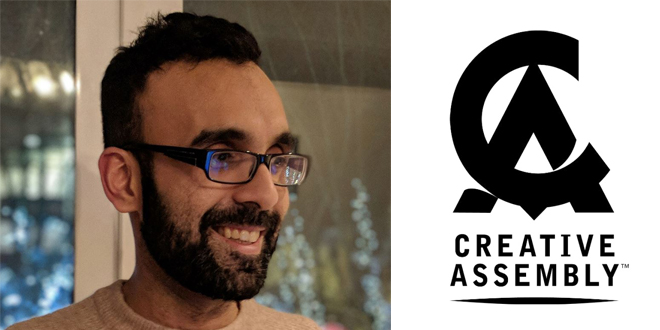Every month, the team at Creative Assembly debunks some common dev role myths. This month, Baj Singh, lead character artist, explains how he hasn’t yet found a tame enough dragon to scan.
The character art pipeline has seen some dramatic changes throughout the last few years. There was a time when one artist would model and texture a character using no more than two software packages.
Generations have past and now we see a diverse range of toolsets being used to incorporate elements of a character, from software that can simulate the effects of clothing wrapped around the human form to others that are purpose built for generating realistic hair.
A character artist’s role has also diversified and, depending on how big the team and project is, more and more elements of a character are compartmentalised and generated procedurally in order to remove that ‘uncanny valley’ look and achieve an almost photorealistic visual fidelity.
Fortunately, with how easily accessible much of this software has become, we are seeing many students who have already dipped their toes in, caught up to their industry peers rather quickly and to an incredible standard.
“What I would love to see from character artists is more diversity in their work. I have seen the traditional knight in armour, orc and elf many times in portfolios but often they are similar to the point that it becomes tedious.”
Each year, as this software gets more and more ingrained into university curriculums, the calibre of student work improves dramatically. Unfortunately, you will find some students who forget that learning the software is only part of the process and in order to become a world-class character artist you need to also acquire the fundamental skillset of traditional artists/sculptors – knowledge of forms, gesture, anatomy and proportions being some of the main ones.
A common myth that I have heard (particularly from students) is that so much of the process is automated now that they can focus less on anatomy and more on learning the software. However, at Creative Assembly, we haven’t found a dragon tame enough to 3D scan into the game and clean up, so I’m afraid this is misinformed information.
For example, even though you have software such as Marvelous Designer which can help aid the generation of clothing folds, as an artist you still need to understand what that material should be made of and how it should function when it hangs off the human form and the process necessary to clean it up in order for it to become game-ready.
What I would love to see from students (and character artists in general) is more diversity in their work. I have seen the traditional knight in armour, orc and elf many times in portfolios (with varying levels in quality) but often they are similar to the point that (from a hiring manager’s perspective) it becomes tedious.
Every now and then, you get that gem whose work completely sidesteps the norm and introduces and implements ideas in a way that really stand out. A knight in armour? How about a fantastical spin on traditional Indian garb instead! Ideas and pieces like these help your work standout from a crowd and (if done to an acceptable quality of course) will really put you head and shoulders over the competition.

 MCV/DEVELOP News, events, research and jobs from the games industry
MCV/DEVELOP News, events, research and jobs from the games industry




